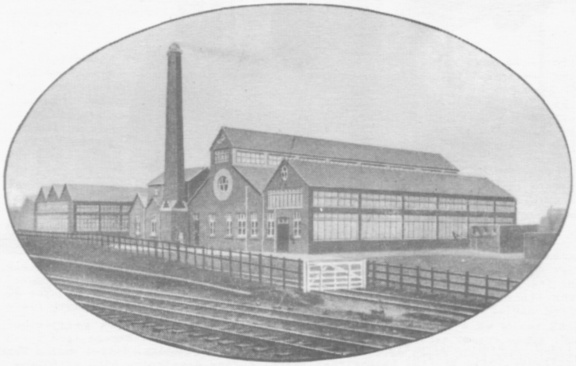
| THE INDUSTRIAL RAILWAY RECORD |
© JUNE 1967 |
“PLANET” LOCOMOTIVES
BRIAN WEBB
The origin of the "Planet" locomotive can be traced back to the Kent Construction & Engineering Co. Ltd., which had a works in Victoria Road, Ashford, Kent, rented from the South Eastern & Chatham Railway (and later from the Southern Railway). There was a standard gauge private siding connecting with the SE&CR, and a narrow gauge test track ran from the works into a nearby field; on the latter many of the firm's products such as skips and locomotives were tested and displayed.
Kent Construction's first excursion into the light railway locomotive market was after the 1914-1918 War, when they purchased from the Government a large number of petrol locomotives and associated spares. These locomotives were of two makes, the familiar Motor Bail "Simplex" and those built to the (American) Baldwin Locomotive Works design. Some had seen service in Europe but others were in new condition and had probably never been used. All were given a thorough overhaul by Kent Construction before being offered for sale in "as new" condition as reconditioned "Simplex" or "Baldwin" locomotives. catalogue covering the "Simplex" locomotives had official Motor Rail photographs of the three types offered - 2½ ton narrow gauge 20hp; 6 ton narrow gauge 40hp; and 8 ton standard gauge 40hp. Examples of the 6 ton and 8 ton units were fitted with armour plating, and all three types had their engines set across the frames. Another catalogue covered the one Baldwin design offered which was a 7½ ton narrow gauge 45hp machine of the same type as the now much rebuilt MOELWYN on the Festiniog Railway.

The Fig.1 The Kent Construction works at Ashford in 1919.
During the next four or five years Kent Construction brought out a range of locomotives to their own designs which were based almost entirely on the Motor Rail "Simplex" but which were sold as "Planet" locomotives. There were both narrow and standard gauge designs with either petrol, paraffin or alcohol engines which may have incorporated some of the ex-Government Motor Bail "Simplex" spares, and indeed some appear to have been rebuilds on Motor Bail underframes. These locomotives were sold by Honeywill Brothers Ltd., London. (In the same period this firm also handled the repair and sale of Government surplus Hunslet 4−6−0 side tanks of the type described in RECORD 1, and others - for example Kerr Stuart 2451; see RECORD 2, page 27. - Hon. Eds.)
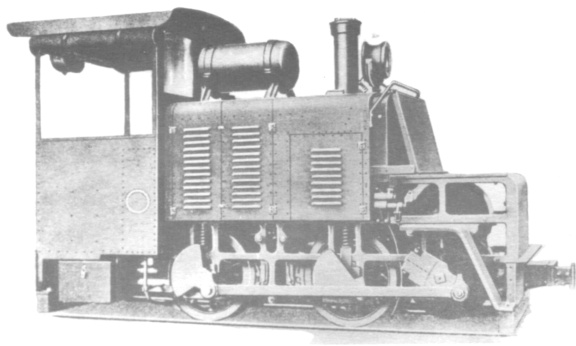
Fig.2 A Kent Construction reconditioned Baldwin locomotive, fitted with a four cylinder (5½in by 7in) four-stroke petrol engine developing 45hp at 650rpm., and a two-speed (4 and 8 mph) gearbox. The only known examples in the United Kingdom are MOELWYN on the Festiniog Railway, and one (scrapped about 1951) in Penlee Quarries Ltd., Newlyn, Cornwall.
The largest Kent Construction "Planet" for standard gauge track was an 8 ton 40hp machine, of which the only survivors I know are at Worthington's Brewery in Burton-on-Trent. These were built between 1923 and 1926 and though retaining their original appearance have all been rebuilt with diesel engines, One of the smaller Kent Construction "Planet" locomotives (built in 1925) worked on the 3ft 0in gauge Rye & Camber Tramway, and has been illustrated in several publications.
In 1925 a new design was introduced in which, for the first time, the engine was set longitudinally in the frames. These machines, having four wheels in common with all other Kent Construction built locomotives, were a 10hp 1¾ ton design for the 2ft gauge. Similar machines can, at the time of writing, be found at the Murston Brickworks of the Associated Portland Cement Manufacturers Ltd., in Kent.
The year 1926 saw the demise of Kent Construction and the works were re−let to firms manufacturing bicycles and repairing agricultural equipment. During the 1939-1945 War part of the works was used for Civil Defence purposes, but today is leased by British Rail to the G.P.O. and a cycle manufacturer.
From Ashford the manufacture of "Planet" locomotives was transferred to the wagon building firm of Stableford & Company, of Coalville, Leicestershire. until they went out of business in 1928, from which time "Planet" locomotives were built by the Bedford crane making firm of Bedford Engineering Ltd., but in 1932 they too failed! (Details of any locomotives built by either Bedford Engineering or Stableford would be most welcome.- Hon. Eds.) "Planet" locomotives were then built by F. C. Hibberd & Co. Ltd., which was formed in the 1928-1932 period.
It appears that only narrow gauge Hibberd locomotives were built with longitudinally mounted engines whilst the transverse mounted engine was used on locomotives of all gauges until 1932. About August 1932 Hibberd purchased the drawings, patents, etc., from the liquidator of James & Fredk. Howard Ltd., an old established Bedford engineering firm which had built internal combustion locomotives from about 1923 to 1931. Hibberd moved into the Park Royal Works, London, in July 1932, and adopted the Howard designs with very little modification. They were produced with their other designs, and all were sold as "Planet" locomotives. The narrow gauge type based on the Howard 2½ ton design is typified by Hibberd 2201 of 1939 at Berrylands Sewage Work of the Greater London Council, while the standard gauge locomotive at the Cleckheaton Works of Yorkshire Tar Distillers Ltd., Hibberd 1881, is, apart from a much improved cab design, almost identical to the Howard 7, 10 and 12 ton locomotives.
Throughout the period from the closure of the Ashford works, the reconditioned 2½ ton "Simplex" locomotives were still obtainable and were in fact illustrated in Hibberd catalogues up to the second half of the 1930's. All the 2½ ton reconditioned locomotives are recognisable by the fact they all have bowed girder type side-frames which were common to all the 1915-1918 built locomotives supplied to the War Department Light Railways by Motor Rail. Motor Rail themselves appear to have adopted straight girder frames about 1926 and later on plate frames, for all their 2½ ton narrow gauge 20hp locomotives.
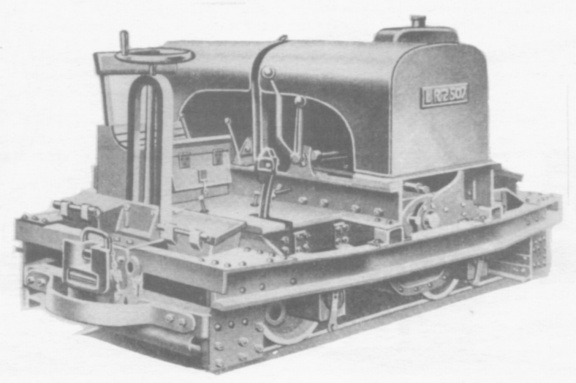
Fig.3 One of the popular and prolific "Simplex" locomotives reconditioned by Kent Construction and fitted with a 20hp two-cylinder Dorman petrol engine. The drive, via an inverted cone clutch, was by shaft to the gearbox and by chains to both axles; giving speeds of 3.4, 8.2 and 10 mph. Notice the transversely mounted engine, and the girder type frame. All locomotives of this type reconditioned by Kent Construction and Hibberd had the girder type of frame even though sold until the late 1930's. This is an important point of identification as the Motor Rail design introduced in the mid-1920's had flat side frames.
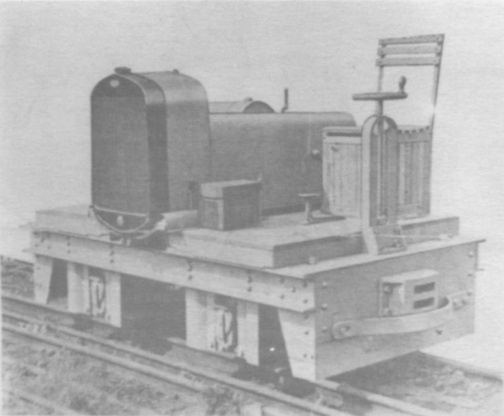
Fig.4 A narrow gauge chain driven "Planet" locomotive based on the Motor Rail "Simplex" type and produced from 1926 or 1927. It was fitted with a 15/25hp Ford model "A" petrol engine, and the constant mesh gearbox gave speeds of 4 and 7 mph. Note the transversely mounted engine.
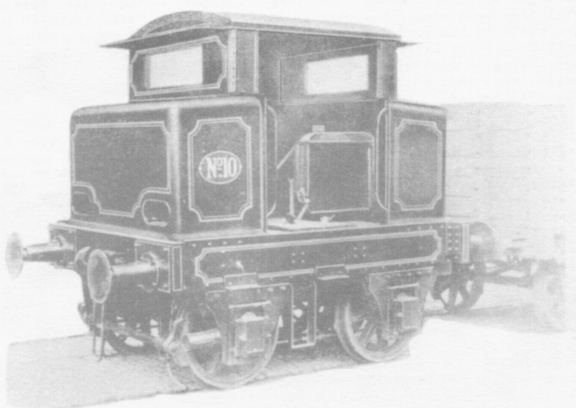
Fig.5 No.10, an 8ton "Planet" delivered to Worthington & Co. Ltd., Burton-on-Trent, in 1926, had a 40hp Dorman engine and a "Duplex" controlled three-speed gearbox. This, and the other five internal combustion locomotives at Worthington's are alleged by the Club to have been built by Hibberd, but it would appear that only No.12 (supplied in 1934) can claim that distinction. A similar locomotive at the Northfield Depot of Kettering Borough Council was supplied (according to the Depot foreman) by Kent Construction in 1926.
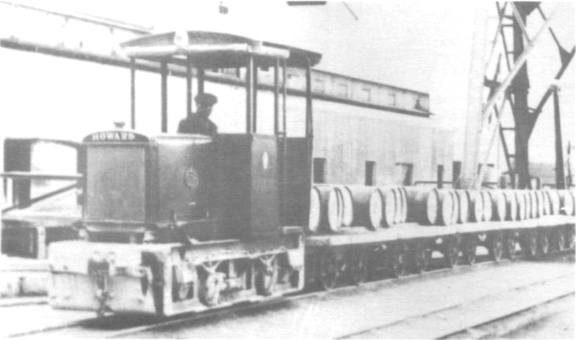
Fig.6 Howard 'H" type locomotives could be supplied with four cylinder petrol engines developing 30/48hp. This example was in use at a works (Bevan's Works?) of Associated Portland Cement Manufacturers Ltd., in Kent.
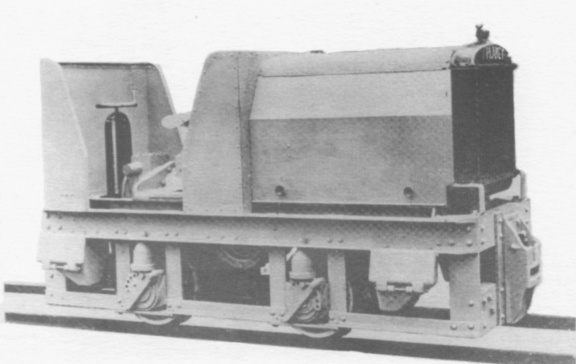
Fig.7 Built by Hibberd at Park Royal in the 1930's, this small locomotive was based on the Howard "H" type. The two-cylinder diesel engine developed 20hp at 1,000 rpm. The gearbox was of the sliding cone type and gave 2- or 3-speeds.
Hibberd turned out a vast quantity of equipment, including railcars, platform tractors (those at London Victoria station, for example), rubber tyred shunting tractors, railway inspection trolleys, dockside ship towing tractors, etc. Many of these had Hibberd works numbers, but the complete list is not known as the firm's records were destroyed in an air raid during the 1939-1945 War. (In the late 1950's "Planet" locomotives were distributed by Thos. Hill (Rotherham) Ltd., but the connection was severed on 31st March 1960 as Hill's considered that their newly introduced "Vanguard" locomotive would be competitive. - Hon. Eds.)
The manufacture of "Planet" locomotives was moved again during 1963, when Hibberd became part of the Butterley Group, and is now carried out at the works of the Butterley Co. Ltd., at Ripley in Derbyshire.
In conclusion I should like to express me appreciation to Messrs. G. Arnott, D. E. Collins and G. Horsman for their valued assistance.
DIMENSIONS
|
|
Fig.2 |
Fig.3 |
Fig.4 |
Fig.5 |
Fig.6 |
Fig.7 |
| Overall Length | 15ft 3in | 9ft 0in | 8ft 4in | 13ft 6in | 9ft 11in | 9ft l0in |
| Overall Width | 5ft 3in | 5ft 0in | 4ft 7in | 7ft 6in | 3ft 10in | 3ft 6in |
| Overall Height | 8ft 6in | 4ft 6in | 5ft 1in | 9ft 9in | 7ft 1½in | 5ft 0in |
| Wheelbase | 4ft 0in | 3ft 6in | 3ft 6in | 5ft 6in | 3ft 11in | 3ft 3in |
| Wheel Diameter | 2ft 2in | 1ft 5¾in | 15-17½in | 3ft 1in | 1ft 6in | 1ft 5¾in |
| Weight | 7½ tons | 2½ tons | 2-4 tons | 8 tons | note A | 4 tons |
| Fuel Capacity | 26 gall | 14 gall | 8-12 gall | 20 gall | ? | 14 gall |
| Gauge | 2ft 0in | 2ft 0in | 18in-42in | 4ft 8½in | 2ft 0in | 18-30in |
Note A - There were 3, 4, 5 and 6 ton designs of this type.